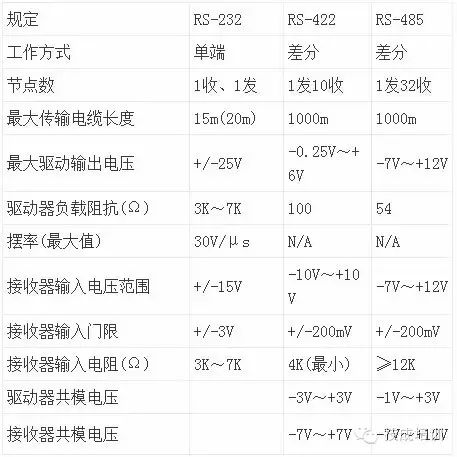Over 70,000 friends have followed this industrial control WeChat platform:Technical sharing,Learning exchange,Industrial control videos
As industrial control professionals, it is essential for us to understand these concepts, which greatly assist in programming and data communication.
RS-232, RS-422, and RS-485 are all serial data interface standards, initially formulated and published by the Electronic Industries Alliance (EIA):
★★★RS-232 was released in 1962, named EIA-232-E, as an industrial standard to ensure compatibility between products from different manufacturers.
★★★RS-422 was developed from RS-232 to address its shortcomings. To improve the short communication distance and low speed of RS-232, RS-422 defines a balanced communication interface that increases the transmission speed to 10Mb/s, extends the transmission distance to 4000 feet (when the speed is below 100kb/s), and allows up to 10 receivers to be connected on one balanced bus. RS-422 is a unidirectional, balanced transmission specification with one transmitter and multiple receivers, named TIA/EIA-422-A standard.
★★★To expand its application range, the EIA established the RS-485 standard in 1983 based on RS-422, adding multipoint, bidirectional communication capabilities, which allow multiple transmitters to connect to the same bus while enhancing the transmitter’s driving capability and conflict protection features, and expanding the common-mode range of the bus, later named TIA/EIA-485-A standard. Since the EIA proposed standard prefixes are all prefixed with “RS”, it is still customary in the communications industry to refer to the above standards with the “RS” prefix.
(1) Performance Parameters of RS-232, RS-422, and RS-485 Table:

(2) Definitions of Simplex, Half-Duplex, and Full-Duplex
If at any time during the communication process, information can only be sent from one party A to another party B, it is called simplex.
If at any time, information can be sent from A to B and also from B to A, but transmission can only exist in one direction at a time, it is called half-duplex transmission.
If at any time, there exist bidirectional signal transmissions from A to B and B to A on the line, it is called full-duplex.

(3) Some Considerations for RS-232
The commonly used three pins for RS-232 are 2, 3, and 5. Pin 5 is the ground, while pins 2 and 3 are used for data transmission. In practical use, two types of wiring sequences are used: straight through for 2, 3 and crossover for 2, 3.
The RS-232 connector can also be divided into male (all pins) and female (all holes).
Don’t forget to share after reading!


Long press to recognize the QR code
Follow for more exciting content
Click to read the original text for history